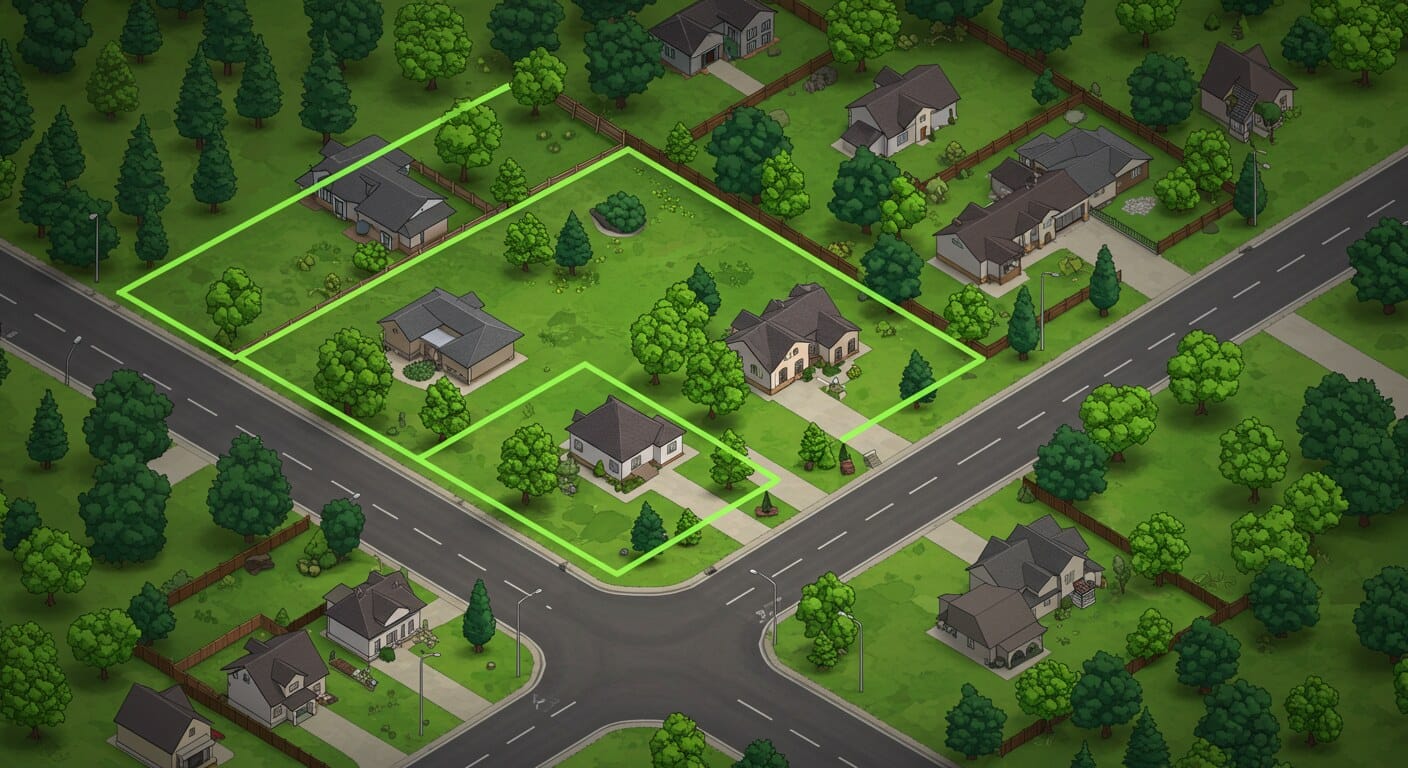Bottom Line Up Front: Understanding who owns right-of-way property isn’t straightforward—while adjacent landowners typically hold title to the underlying land, they don’t have unrestricted control over how it’s used. Public utilities, government entities, and others may have legal rights to access and use these areas, creating complex ownership scenarios that buyers and sellers must navigate carefully.
Property ownership becomes complicated when right-of-way issues enter the picture. Whether you’re considering Staten Island homes for sale or already own property with right-of-way concerns, understanding these legal complexities can save you from costly disputes and help you make informed decisions about your real estate investment.
Exactly Who Owns Right-of-Way Property?
A right-of-way represents a legal right to pass through or use another person’s land for specific purposes. Unlike full property ownership, a right-of-way grants limited use rights while the underlying land ownership typically remains with the adjacent property owner.
The distinction between a right-of-way and an easement often confuses property owners. While these terms are sometimes used interchangeably, a right-of-way specifically refers to the right to travel across land, whereas an easement encompasses broader use rights for utilities, drainage, or other purposes. According to the Cornell Legal Information Institute, a right-of-way can be either public or private, depending on who benefits from its use and how it was established.
Public rights-of-way typically include roads, sidewalks, and utility corridors that serve the general public or government entities. Private rights-of-way, conversely, benefit specific individuals or properties, such as shared driveways or access roads to landlocked parcels.
Who Holds Title vs Who Has Use Rights?
The fundamental principle of right-of-way ownership centers on the distinction between holding legal title and possessing use rights. In most cases, the adjacent landowner retains fee title to the land beneath a right-of-way, but their control over that land becomes limited by the rights granted to others.
Property law recognizes two key concepts in these situations: the dominant estate (the property that benefits from the right-of-way) and the servient estate (the property that bears the burden of providing access). The Bureau of Indian Affairs explains that this relationship creates ongoing obligations and restrictions for both parties.
Utility companies represent a common example of this complexity. When power lines cross your property, the utility company typically holds an easement or right-of-way that allows them to access, maintain, and repair their infrastructure. You still own the land beneath the power lines, but your ability to build structures or plant large trees in that area becomes restricted.
Government entities can also hold right-of-way interests through various means, including eminent domain proceedings. These situations create permanent limitations on how property owners can use their land, even though they continue to hold legal title.
How Rights-of-Way Are Created
Rights-of-way come into existence through several distinct legal mechanisms, each with different implications for property owners and users.
Deed and Grant Creation: The most straightforward method involves explicitly granting right-of-way privileges through a deed or separate agreement. Property owners voluntarily create these arrangements when selling land, subdividing property, or accommodating neighbors’ access needs.
Dedication and Platting: When developers create new subdivisions, they often dedicate certain areas as public rights-of-way through the platting process. These dedicated areas become permanent public easements, typically for roads and utilities.
Prescriptive Rights: Long-term, continuous use of someone else’s land can sometimes create legal right-of-way privileges, even without explicit permission. However, prescriptive easements require meeting specific legal criteria, including open, notorious, and uninterrupted use for a statutory period.
Eminent Domain: Government entities can establish rights-of-way through eminent domain when public projects require private land access. The Bureau of Land Management oversees many federal right-of-way programs that cross public lands, demonstrating how government agencies manage these complex arrangements.
Understanding how a right-of-way was created helps determine the scope of rights and responsibilities involved, making this information crucial during property transactions.
Maintenance and Liability
Property maintenance and liability responsibilities in right-of-way situations depend on the specific terms of the easement and local regulations. These obligations often create confusion for property owners who assume that owning the underlying land means they control all maintenance decisions.
Adjacent property owners typically bear responsibility for maintaining sidewalks, removing snow, and trimming vegetation that might obstruct right-of-way access. The Seattle Department of Transportation provides clear guidance on property owner obligations, noting that failure to maintain publicly accessible areas can result in liability for injuries or property damage.
Municipal utilities and other entities with right-of-way privileges generally maintain their own infrastructure within these areas. However, property owners may still face restrictions on activities that could interfere with utility access or operation. For example, planting deep-rooted trees near utility lines or building structures over utility easements typically requires approval.
Insurance considerations become particularly important when dealing with right-of-way maintenance. Property owners should verify that their insurance coverage addresses potential liability arising from right-of-way maintenance obligations. Some policies may exclude coverage for certain easement-related activities, making additional coverage necessary.
If you’re unsure about your maintenance responsibilities, consider maintaining your property’s ROW by consulting with a qualified real estate professional who can help clarify your specific obligations.
Buying or Selling Property With a ROW
Real estate transactions involving right-of-way issues require careful attention to disclosure requirements, title examination, and property valuation considerations. Both buyers and sellers must understand how these legal arrangements affect property use and value.
Title reports often highlight right-of-way exceptions that limit the property owner’s rights. These exceptions should trigger detailed investigation into the scope and impact of the right-of-way arrangement. Buyers should review exactly which rights have been granted, who holds those rights, and what restrictions apply to their intended property use.
Professional surveys become particularly valuable when right-of-way boundaries aren’t clearly marked. Survey documents can reveal encroachments, boundary disputes, or unauthorized use of right-of-way areas that might not be apparent during casual property inspection.
Property values can be affected by right-of-way arrangements in various ways. While some easements have minimal impact on property use and value, others can significantly restrict development potential or create ongoing maintenance burdens. For properties like Staten Island homes for sale, understanding these impacts helps ensure fair pricing and proper expectation setting.
Rocket Mortgage emphasizes the importance of understanding the difference between rights-of-way and easements during the mortgage approval process, as lenders may require additional documentation or impose restrictions based on these arrangements.
Disclosure requirements vary by state, but sellers generally must inform buyers about known right-of-way arrangements that affect the property. Failure to provide adequate disclosure can result in legal liability and transaction delays.
Common Disputes and Resolution Tips
Right-of-way disputes frequently arise from misunderstandings about use rights, maintenance responsibilities, or boundary locations. These conflicts can escalate quickly if not addressed through proper legal channels.
Encroachment Issues: Property owners sometimes build structures or plant landscaping that interferes with right-of-way access. These encroachments can trigger legal action from the right-of-way holder and may require expensive removal or modification.
Access Blocking: Disputes commonly arise when property owners attempt to limit or block access through right-of-way areas. Even property owners who hold underlying title cannot typically prevent lawful right-of-way use without risking legal consequences.
Maintenance Disagreements: Conflicts over who bears responsibility for maintaining right-of-way areas can become particularly contentious, especially when maintenance costs are substantial or when multiple parties share use rights.
Resolution strategies should begin with reviewing the original documents that created the right-of-way arrangement. These documents typically specify use rights, maintenance obligations, and resolution procedures for disputes.
Mediation often provides a cost-effective alternative to litigation for resolving right-of-way conflicts. Professional mediators familiar with property law can help parties find mutually acceptable solutions without the expense and uncertainty of court proceedings.
Quiet title suits represent a formal legal mechanism for resolving complex ownership and use rights disputes. These court proceedings can clarify ambiguous right-of-way arrangements and establish clear boundaries for future use.
The Harbinger Land Blog provides detailed analysis of various right-of-way legal perspectives, offering insights into how courts typically resolve these disputes.
For property owners in the Staten Island area, consulting the Guide to Staten Island real estate can provide local context for understanding how right-of-way issues affect property transactions in the region.
Frequently Asked Questions
Can I build on a right-of-way? Building restrictions depend on the specific terms of the right-of-way arrangement. Most rights-of-way prohibit permanent structures that could interfere with access or utility operations, but temporary improvements may be permitted with approval.
Who pays for right-of-way maintenance? Maintenance responsibilities vary based on the easement terms and local regulations. Property owners often maintain landscaping and snow removal, while utility companies typically maintain their infrastructure.
Can a right-of-way be terminated? Termination possibilities depend on how the right-of-way was created and whether the original purpose still exists. Some rights-of-way can be abandoned or terminated through legal procedures, while others remain permanent property encumbrances.
How do right-of-way issues affect property insurance? Insurance coverage may be affected by right-of-way maintenance obligations and liability risks. Property owners should review their policies to ensure adequate coverage for easement-related activities.
What’s the difference between public and private right-of-way? Public rights-of-way serve government or community purposes, while private rights-of-way benefit specific individuals or properties. The distinction affects maintenance responsibilities and use restrictions.
For those interested in affordable Staten Island homes under $300K, understanding right-of-way implications can help identify properties that offer the best value despite potential use limitations.
The Matus Law Group provides comprehensive analysis of right-of-way property ownership issues, offering legal perspectives on complex ownership scenarios.
Key Takeaways and Next Steps
Understanding who owns right-of-way property requires recognizing the distinction between legal title and use rights. While property owners typically hold title to the underlying land, right-of-way arrangements create permanent limitations on how that land can be used and developed.
Property buyers should carefully investigate existing right-of-way arrangements before completing transactions, ensuring they understand both the limitations and obligations involved. Sellers must provide adequate disclosure about these arrangements to avoid legal liability and transaction complications.
When disputes arise, seeking resolution through mediation or legal consultation often proves more effective than attempting to resolve conflicts independently. The complex legal principles governing right-of-way arrangements require professional expertise to navigate successfully.
For personalized guidance on right-of-way issues affecting your property transaction, speak with a Robert DeFalco Realty expert who can provide local market knowledge and help you understand how these arrangements affect your specific situation.
Remember that right-of-way arrangements create long-term obligations and restrictions that extend far beyond the original property transaction. Understanding these implications before buying or selling property helps ensure you make informed decisions that protect your interests and avoid future conflicts.

